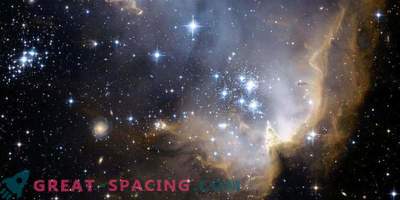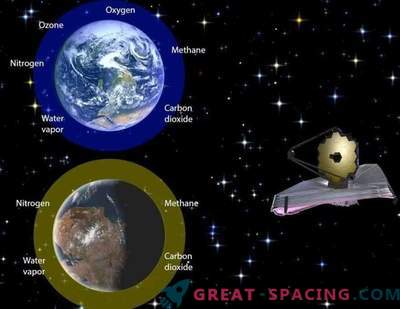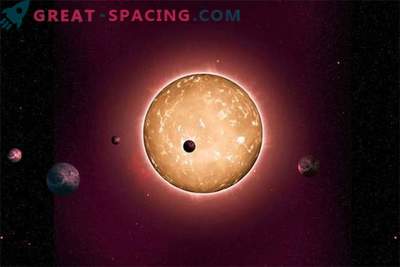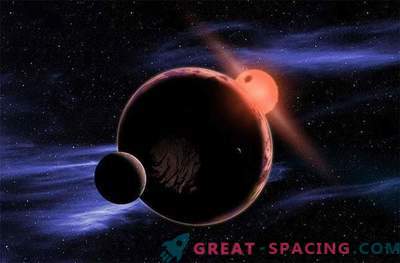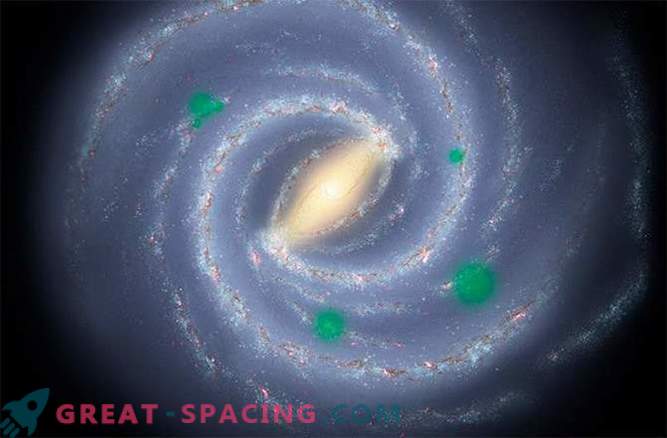
With the improvement of astronomical methods, the astrophysicist team believes that it can not only detect traces of alien life in exoplanetary atmospheres, but also track its tireless spread throughout the galaxy.
The study, led by Henry Lin of the Harvard-Smithsonian Center for Astrophysics (CA), suggests that this phenomenon may be possible in the generation or so, and that the panspermia hypothesis may act as the origin of a system of alien organisms wandering from one star system to another one.
Panspermia is a process in which life somehow moves from planet to planet. This can happen when a planet on which there is life has suffered from a massive asteroid; fragments of the crust, the planets will be thrown into space and any life contained in these samples can be moved to another world. If these hardy forms of life accomplish this path, then perhaps they will be able to consolidate and sow life in that new environment.
There are other hypothetically possible mechanisms by which life could “jump” from one planet to another — including the fascinating possibility of “planned panspermia” when an intellectual civilization can consciously populate other star systems with capsules containing their biological code. Another way of relocation is necessary for this life, allowing one to survive on the road, allowing lyophilized dead organisms attached to the cosmic rock as a template for life, to repopulate worlds, this process is called “necropanspermia”. At the moment, these processes are only hypotheses, and this new study does not prove how life can spread, but we know that fragments of planetary bodies can travel from planet to planet. For example, the types of meteorites found on Earth are known to occur from Mars - their isotopic signature is identical to measurements made by many robots currently in orbit and wandering around the Red Planet. These meteorites were cut off from the crust of Mars into space as a result of historical influences.
There is an assumption that the fragments of the Earth also broke off into space and computer simulations showed that there is a statistical probability that the rocks of the Earth reached the orbits of Jupiter and Saturn, and could potentially affect some satellites gas giants. Contained or not in the abundance of terrestrial organisms in these rocks is unknown, and it can be assumed that the secondary genesis of life has been extended.
It is said that life can move on cosmic stones, and this life can engender new biospheres in other worlds ... how did astrobiologists recognize that life spreads from one star system to another? Well, like a cold spreading in a viral way.
“Life could spread from a host star, to whole star systems, like an outbreak of an epidemic. In a sense, Milky Way galaxy will be infected with hot spots, ”says co-author Avi Loeb, as well as CFA, in a press release.
Using a computer model, Lin and Loeb suggested that over time, “seeds” spread from the biosphere of one planet in all directions. If one of these seeds reaches a habitable planet, there is a chance that it may take root. This creates several life-giving oases that can be discovered in the future by space telescopes peering into these exoplanetary atmospheres. And if some of these worlds endowed with life are found, a copy of the ecosystem may appear. “In our theory of the formation of life forms, they grow and accumulate like bubbles into a pot of boiling water,” said Lin.
According to the authors, whose papers were accepted for publication in The Astrophysical Journal Letters (and can be viewed in arXiv) to see any “viral” pattern of life, it should spread relatively quickly, otherwise the movement of stars throughout the galaxy will be a blurry pattern. If panspermia, as the spread of life occurred in the Milky Way, it would be ideal if the Earth was on the verge of a viral “bubble”, a situation in which all inhabited worlds are found only in one half of the sky, while the other half are devoid of life, despite the presence in it of habitable planets.
We can really decipher the bio-signatures of life in the atmospheres of distant worlds, but if we have to discover clusters of inhabited worlds, the question arises: is panspermia a viable mechanism for the spread of life? Even more than that, it casts doubt on the origin of life on Earth - did life originate here? Has it spread throughout the solar system or even to other stars?
Or was the Earth just in the right place at the right time to catch the virus of life?





